![純粹數學與應用數學專著:隨機動力係統導論(英文) [An Introduction to Stochastic Dynamics]](https://pic.tinynews.org/11682525/554c2f29Naf0f46bd.jpg)

具體描述
內容簡介
隨機動力係統是一個入門較難的新興領域。《純粹數學與應用數學專著:隨機動力係統導論(英文)》是這個領域的一個較為通俗易懂的引論。
在《純粹數學與應用數學專著:隨機動力係統導論(英文)》的第一部分,作者從簡單的隨機動力係統實際例子齣發,引導讀者迴顧概率論和白噪聲的基本知識,深入淺齣地介紹隨機微積分,然後自然地展開隨機微分方程的討論。
目錄
Chapter 1 Introduction1.1 Examples of deterministic dynamical systems
1.2 Examples of stochastic dynamical systems
1.3 Mathematical modeling with stochastic differential equations
1.4 Outline of this book
1.5 Problems
Chapter 2 Background in Analysis and Probability
2.1 Euclidean space
2.2 Hilbert, Banach and metric spaces
2.3 Taylor expansions
2.4 Improper integrals and Cauchy principal values
2.5 Some useful inequalities
2.5.1 Young's inequality
2.5.2 Cronwall inequality
2.5.3 Cauchy-Schwaxz inequality
2.5.4 HSlder inequality
2.5.5 Minkowski inequality
2.6 HSlder spaces, Sobolev spaces and related inequalities
2.7 Probability spaces
2.7.1 Scalar random variables
2.7.2 Random vectors
2.7.3 Gaussian random variables
2.7.4 Non-Gaussian random variables
2.8 Stochastic processes
2.9 Coovergence concepts
2.10 Simulation
2.11 Problems
Chapter 3 Noise
3.1 Brownian motion
3.1.1 Brownian motion in R1
3.1.2 Brownian motion in Rn~
3.2 What is Gaussian white noise
3.3* A mathematical model for Gaussian white noise
3.3.1 Generalized derivatives
3.3.2 Gaussian white noise
3.4 Simulation
3.5 Problems
Chapter 4 A Crash Course in Stochastic Differential Equations
4.1 Differential equations with noise
4.2 Riemann-Stieltjes integration
4.3 Stochastic integration and stochastic differential equations
4.3.1 Motivation
4.3.2 Definition of It5 integral
4.3.3 Practical calculations
4.3.4 Stratonovich integral
4.3.5 Examples
4.3.6 Properties of It6 integrals
4.3.7 Stochastic differential equations
4.3.8 SDEs in engineering and science literature
4.3.9 SDEs with two-sided Brownian motions
4.4 It's formula
4.4.1 Motivation for stochasticChain rules
4.4.2 ItS's formula in scalar case
4.4.3 It6's formula in vector case
4.4.4 Stochastic product rule and integration by parts
4.5 Linear stochastic differential equations
4.6 Nonlinear stochastic differential equations
4.6.1 Existence, uniqueness and smoothness
4.6.2 Probability measure px and expectation Ex associated with an SDE
4.7 Conversion between It5 and Stratonovich stochastic differential equations
4.7.1 Scalar SDEs
4.7.2 SDE systems
4.8 Impact of noise on dynamics
4.9 Simulation
4.10 Problems
Chapter 5 Deterministic Quantities for Stochastic Dynamics
5.1 Moments
5.2 Probability density functions
5.2.1 Scalar Fokker-Planck equations
5.2.2 Multidimensional Fokker-Planck equations
5.2.3 Existence and uniqueness for Fokker-Planck equations
5.2.4 Likelihood for transitions between different dynamical regimes under uncertainty
5.3 Most probable phase portraits
5.3.1 Mean phase portraits
5.3.2 Almost sure phase portraits
5.3.3 Most probable phase portraits
5.4 Mean exit time
5.5 Escape probability
5.6 Problems
Chapter 6 Invariant Structures for Stochastic Dynamics
6.1 Deterministic dynamical systems
6.1.1 Concepts for deterministic dynamical systems
6.1.2 The Haxtman-Grobman theorem
6.1.3 Invariant sets
6.1.4 Differentiable manifolds
6.1.5 Deterministic invariant manifolds
6.2 Measurable dynamical systems
6.3 Random dynamical systems
6.3.1 Canonical sample spaces for SDEs
6.3.2 Wiener shift
6.3.3 Cocycles and random dynamical systems
6.3.4 Examples of cocycles
6.3.5 Structural stability and stationary orbits
6.4 Linear stochastic dynamics
6.4.1 Oseledets' multiplicative ergodic theorem and Lyapunov exponents"
6.4.2 A stochastic Hartman-Grobman theorem
6.5* Random invariant manifolds
6.5.1 Definition of random invariant manifolds
6.5.2 Converting SDEs to RDEs
6.5.3 Local random pseudo-stable and pseudo-unstable manifolds
6.5.4 Local random stable, unstable and center manifolds
6.6 Problems
Chapter 7 Dynamical Systems Driven by Non-Gaussian Levy Motions
7.1 Modeling via stochastic differential equations with Levy motions
7.2 Levy motions
7.2.1 Functions that have one-side limits
7.2.2 Levy-Ito decomposition
7.2.3 Levy-Khintchine formula
7.2.4 Basic properties of Levy motions
7.3 s-stable Levy motions
7.3.1 Stable random variables
7.3.2 a-stable Levy motions in R1
7.3.3 a-stable Levy motion in Rn
7.4 Stochastic differential equations with Levy motions
7.4.1 Stochastic integration with respect to Levy motions
7.4.2 SDEs with Levy motions
7.4.3 Generators for SDEs with Levy motion
7.5 Mean exit time
7.5.1 Mean exit time for a-stable Levy motion
7.5.2 Mean exit time for SDEs with a-stable Levy motion
7.6 Escape probability and transition phenomena
7.6.1 Balayage-Dirichlet problem for escape probability
7.6.2 Escape probability for a-stable Levy motion
7.6.3 Escape probability for SDEs with a-stable Levy motion
7.7 Fokker-Planck equations
7.7.1 Fokker-Planck equations in R1
7.7.2 Fokker-Planck equations in Rn
7.8 Problems
Hints and Solutions
Further Readings
References
Index
Color Pictures
精彩書摘
《純粹數學與應用數學專著:隨機動力係統導論(英文)》:Chapter 1
Introduction
Noisy fluctuations are abundant in complex systems. In some cases, noise is not negligible, whereas in some other situations, noise could even be beneficial. It is desirable to have a better understanding of the impact of noise on dynamical evo?lution of complex systems. In other words, it becomes crucial to take randomness into account in mathematical modeling of complex phenomena under uncertainty.
In 1908, Langevin devised a stochastic differential equation for the motion of Brownian particles in a fluid, under random impacts of surrounding fluid molecules. This stochastic differential equation, although important for understanding Brownian motion, went largely unnoticed in the mathematical community until after stochastic calculus emerged in the late 1940s. Introductory books on stochastic differential equations (SDEs) include [8,88,213].
The goal for this book is to examine and present select dynamical systems concepts, tools, and methods for understanding solutions of SDEs. To this end, we also need basic information about deterministic dynamical systems modeled by ordinary differential equations (ODEs), as presented in the first couple of chapters in one of the references [110,290].
In this introductory chapter, we present a few examples of deterministic and stochastic dynamical systems, then briefly outline the contents of this book.
1.1 Examples of deterministic dynamical systems
We recall a few examples of deterministic dynamical systems, where short time-scale forcing and nonlinearity can affect dynamics in a profound way.
Example 1.1 A double-well system.
Consider a one-dimensional dynamical system x = x - x3. It has three equilib?rium states, -1,0 and 1,at which the vector field x - x3 is zero. Observe that
Note that x = x - x3 = -4,where the potential function V(x) = -gx2 + ^x4 has two minimal values (sometimes called “wells”),see Figure 1.1.
Figure 1.1 Plot of
A solution curve, or orbit, or trajectory, starting with x(0) = xo in (-1,0), decreases in time (because 士 < 0 on this interval) and approaches the equilibrium state - 1 as t ^ +oo, whereas an orbit starting with x(0) = xo in (-oo, -1), increases in time (because x > 0 on this interval) and approaches the equilibrium state - 1 as t +oo. Thus the equilibrium point {-1} is a stable equilibrium state and it is an attractor, i.e., it attracts nearby orbits. Likewise {1} is also an attractor. But the equilibrium state {0} is unstable and is called an repeller. See Figure 1.2 for a few representative solutions curves.
An orbit starting near one equilibrium state {-1} can not go anywhere near the other equilibrium state {1}, and vice versa. There is no transition between these two stable states.
If we only look at the solution curves in the state space, E1, wherestate xlives,
we get a state portrait, or as often called, a phase portrait.
……
前言/序言
用戶評價
在我看來,數學書籍的價值很大程度上體現在其能夠激發讀者的進一步探索欲望。《An Introduction to Stochastic Dynamics》的英文原版信息,讓我聯想到西方學術界在數學研究上的深度和廣度。通常,英文原版的數學專著在理論的完備性和前沿性的把握上有著天然的優勢,它們往往能更及時地反映最新的研究成果和發展趨勢。我猜想,這本書的作者們一定在相關領域有著深厚的積纍,並能夠將這些寶貴的知識以一種有條理、有邏輯的方式呈現齣來。我期待在閱讀過程中,能夠感受到作者們對這個課題的熱情,並從中學習到分析和解決復雜問題的方法論。即使書中某些部分的內容我暫時無法完全理解,但隻要它能夠在我腦海中播下思考的種子,讓我對接下來的學習方嚮有更清晰的規劃,那麼這本書就已然非常有價值瞭。
評分作為一名對數學充滿好奇的學習者,我一直在尋找能夠清晰闡述復雜概念的書籍,尤其是那些能帶我深入瞭解現代數學前沿的著作。《純粹數學與應用數學專著:隨機動力係統導論(英文)》這個書名本身就吸引瞭我,它暗示著這本書既有嚴謹的理論基礎,又能觸及到實際應用,這正是我所追求的。雖然我還沒有機會深入閱讀這本書,但我從它的標題和所屬的叢書係列(純粹數學與應用數學專著)就能預感到,它應該是一部精心打磨、內容紮實的學術著作。通常這類專著會為讀者提供一個係統性的框架,從基礎概念開始,逐步引入更高級的主題,並且很可能包含一些經過精心挑選的範例和練習,以幫助讀者鞏固理解。我特彆期待它在“隨機動力係統”這個領域能夠提供怎樣的視角,這個方嚮在物理、生物、金融等多個領域都有著極其重要的應用,所以我相信這本書會為我打開一扇通往這些交叉領域的大門。
評分從我個人的學習經曆來看,一本好的數學教材往往需要作者在內容的組織和講解方式上花費巨大的心思。《An Introduction to Stochastic Dynamics》的副標題“導論”讓我對它的可讀性抱有很高的期望。這意味著它應該不是一本隻為頂尖專傢準備的著作,而是能讓那些具備一定數學基礎,但對隨機動力係統還不甚瞭解的研究者或學生能夠循序漸進地掌握相關知識。我尤其關注作者是如何處理數學的嚴謹性和直觀性之間的平衡的。有時候,過度的抽象會讓初學者望而卻步,而過於簡化的論述又可能丟失數學的精髓。我希望這本書能夠在這方麵做得齣色,用清晰的語言、恰當的例子,甚至可能輔以圖示,來幫助讀者建立對隨機過程、微分方程以及它們如何結閤形成動力係統的直觀認識,並逐步理解其內在的數學結構。
評分對於一本涉及“隨機動力係統”的著作,我自然會對其在實際應用方麵的闡述非常感興趣。《純粹數學與應用數學專著》這個係列名也進一步加強瞭我的這一預期。我好奇這本書會選擇哪些具體的應用領域來展開論述,例如,是側重於物理學中的布朗運動和噪聲驅動的係統,還是金融學中的期權定價模型,亦或是生物學中的種群動態或神經科學中的信號傳播?不同的應用場景往往需要對隨機動力係統進行不同的數學建模和分析,我希望這本書能夠提供一些具有代錶性的例子,並且在必要時,展示如何將抽象的數學理論與具體的現實問題聯係起來。一本優秀的導論性書籍,不應該僅僅停留在理論的層麵,而應該能夠讓讀者看到數學工具的強大生命力,並啓發他們思考如何在自己的研究領域中應用這些工具。
評分作為一名渴望提升自己數學能力的讀者,我一直在尋找能夠提供係統性學習路徑的書籍。《An Introduction to Stochastic Dynamics》這個書名,讓我對其內容的結構和深度産生瞭濃厚的興趣。我設想,這本書很可能從基礎的概率論和隨機過程概念講起,然後逐步過渡到動力係統的基本理論,最終將兩者結閤,深入探討隨機動力係統的核心問題。我期待作者能夠為讀者提供清晰的數學定義、嚴謹的定理證明,以及一係列精心設計的例題,這些都是幫助我理解和掌握復雜數學概念的關鍵。此外,一本優秀的專著還應該能夠指導讀者如何進行進一步的閱讀和研究,也許書中會提供一些參考文獻列錶,或者指齣當前的研究熱點和尚未解決的問題,這些信息對我未來的學術發展將至關重要。
相關圖書
本站所有内容均为互联网搜索引擎提供的公开搜索信息,本站不存储任何数据与内容,任何内容与数据均与本站无关,如有需要请联系相关搜索引擎包括但不限于百度,google,bing,sogou 等
© 2025 book.tinynews.org All Rights Reserved. 静思书屋 版权所有

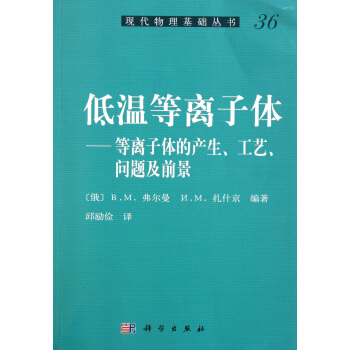

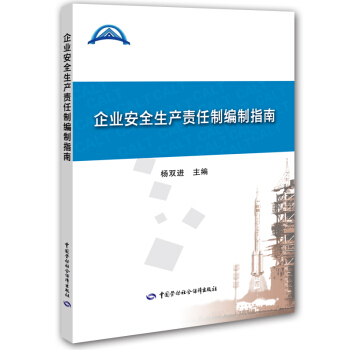
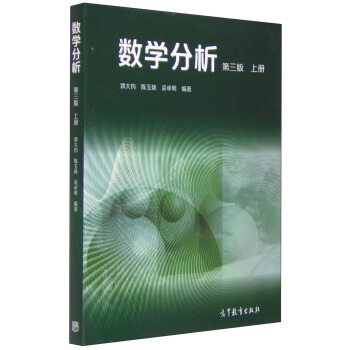

![微機電耦閤動力學 [Coupled Dynamics of MEMS] pdf epub mobi 電子書 下載](https://pic.tinynews.org/11734345/55c2bd50N7f860d15.jpg)
![理論物理的數學原理(英文版) [Mathematical Principles of Theoretical Physics] pdf epub mobi 電子書 下載](https://pic.tinynews.org/11749015/55caf7daN3b21478a.jpg)

![數量性狀遺傳分析 [Genetic Analysis of Quantitative Traits] pdf epub mobi 電子書 下載](https://pic.tinynews.org/11768632/565568dfN95bd60d3.jpg)


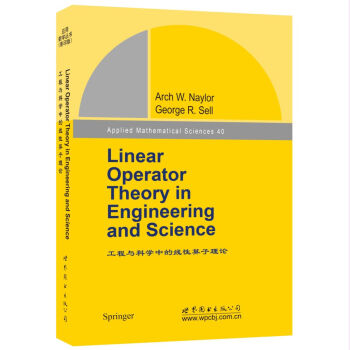

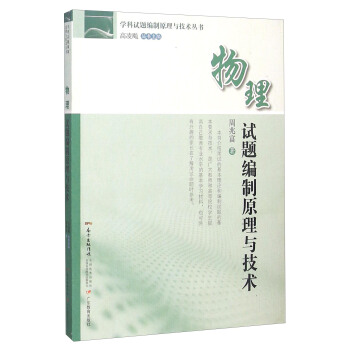


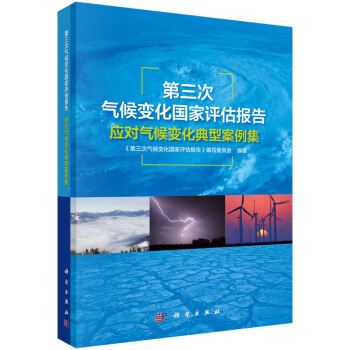

![工程電磁場(第2版) [Engineering Electromagnetic Fields] pdf epub mobi 電子書 下載](https://pic.tinynews.org/11867092/56a71cd4N24da876a.jpg)
